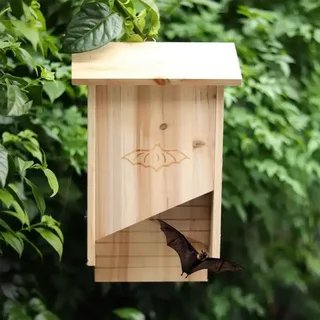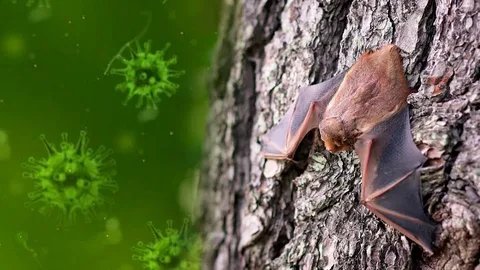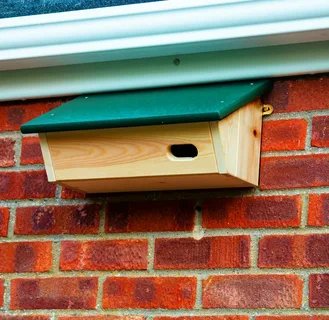When we think of garden helpers, bees and butterflies often come to mind. But there’s another nighttime guardian that plays a crucial role in maintaining balance in your garden ecosystem: the bat. Often misunderstood, bats are not pests—they’re powerful pollinators and one of nature’s most effective forms of pest control. In this **Gardening Class**, we explore how to build and install your very own **bat house**, turning your garden into a sanctuary for these incredible flying mammals.

The first part of the image above shows a **DIY blueprint for constructing a bat box**. It includes dimensions, design elements, and key construction features that ensure bats will feel secure and sheltered. The interior of the house includes narrow crevices between 15mm and 25mm wide, the ideal space for bats to roost together in warmth and safety. The materials used are typically untreated wood, with multiple layers of baffles and a rainproof roof to keep the space dry and draft-free. Bats are extremely sensitive to disturbances and temperature changes, so the design must be tight, dark, and quiet. The placement of the bat house is equally important—installed high off the ground with a clear line of flight, ideally facing southeast to catch the morning sun and help maintain internal warmth.

The second photo shows a **bat box installed on the side of a building**, raised and sheltered under the roofline. This is a practical setup that mimics natural roosting environments such as tree bark or cave ceilings. These elevated boxes attract common backyard bat species like the Little Brown Bat or the Big Brown Bat, both known for eating thousands of mosquitoes, beetles, moths, and crop-damaging insects every single night. That means less need for chemical pesticides and more restful summer evenings outdoors.

The third photo reveals the ultimate reward: a bat house filled with dozens—sometimes hundreds—of resting bats. Far from being creepy, this image is a sign of a **healthy, thriving microhabitat**. The presence of bats indicates a robust food web and a garden that’s functioning in harmony with nature. And despite their reputation, bats pose no threat to humans when left undisturbed. In fact, they’re shy, gentle, and incredibly clean animals that avoid contact and work silently through the night.
By adding a bat house to your property, you’re not just giving these animals a safe home. You’re also investing in your garden’s future—reducing the insect population naturally, supporting biodiversity, and helping to reverse the rapid loss of bat habitats across the globe. With pollinators and pest-controlling species in decline, every effort counts, and your backyard could become a critical part of that change.
This project is a perfect addition to our **Gardening Class**, where we teach more than just planting and watering. We explore **ecological gardening**, **natural pest solutions**, and how to create gardens that support wildlife while still being beautiful and productive. Building a bat box is a fun, educational project for families, students, and eco-conscious gardeners looking to make a positive impact with minimal effort and cost.
